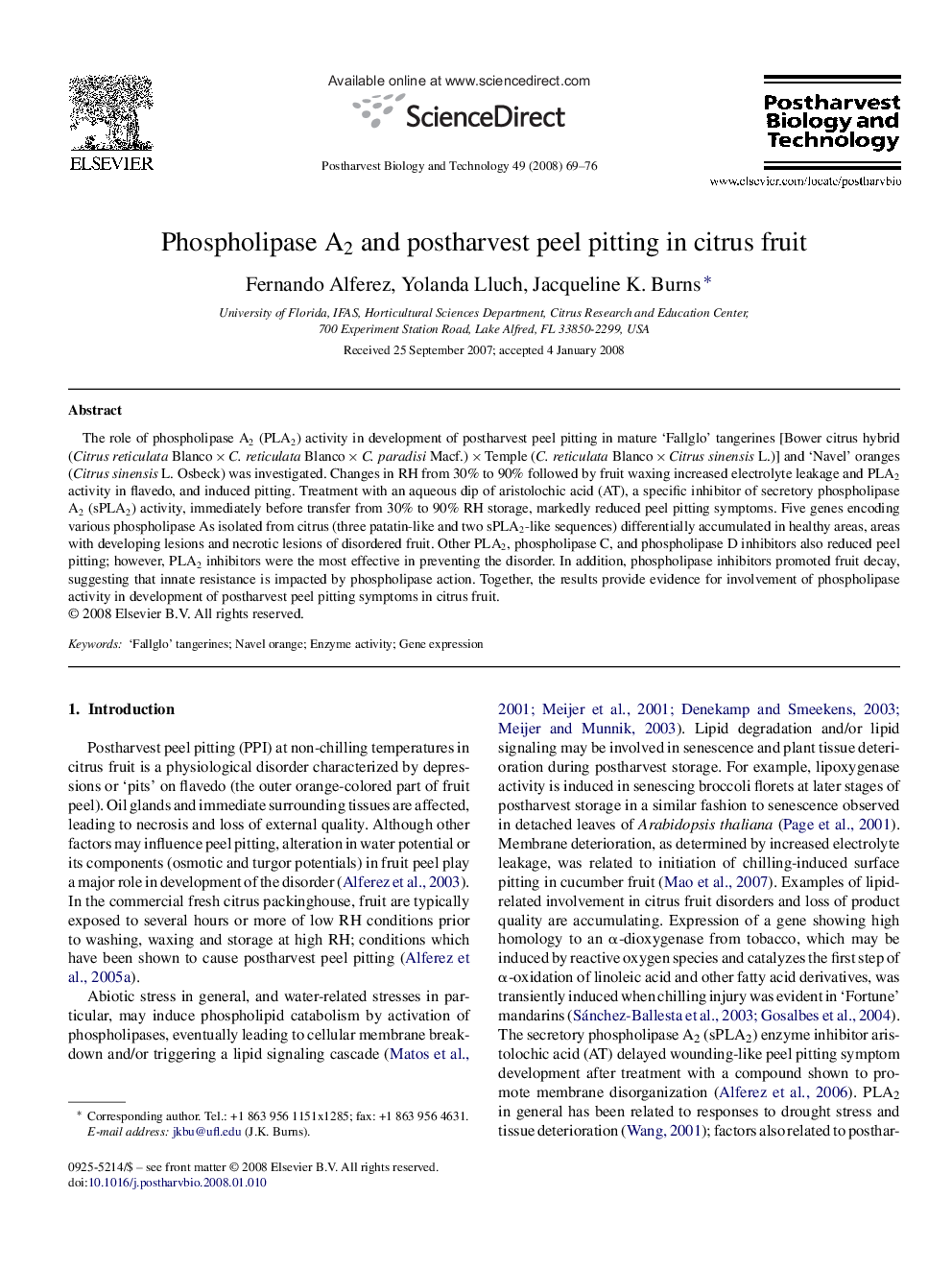| Article ID | Journal | Published Year | Pages | File Type |
|---|---|---|---|---|
| 4519440 | Postharvest Biology and Technology | 2008 | 8 Pages |
Abstract
The role of phospholipase A2 (PLA2) activity in development of postharvest peel pitting in mature 'Fallglo' tangerines [Bower citrus hybrid (Citrus reticulata Blanco Ã C. reticulata Blanco Ã C. paradisi Macf.) Ã Temple (C. reticulata Blanco Ã Citrus sinensis L.)] and 'Navel' oranges (Citrus sinensis L. Osbeck) was investigated. Changes in RH from 30% to 90% followed by fruit waxing increased electrolyte leakage and PLA2 activity in flavedo, and induced pitting. Treatment with an aqueous dip of aristolochic acid (AT), a specific inhibitor of secretory phospholipase A2 (sPLA2) activity, immediately before transfer from 30% to 90% RH storage, markedly reduced peel pitting symptoms. Five genes encoding various phospholipase As isolated from citrus (three patatin-like and two sPLA2-like sequences) differentially accumulated in healthy areas, areas with developing lesions and necrotic lesions of disordered fruit. Other PLA2, phospholipase C, and phospholipase D inhibitors also reduced peel pitting; however, PLA2 inhibitors were the most effective in preventing the disorder. In addition, phospholipase inhibitors promoted fruit decay, suggesting that innate resistance is impacted by phospholipase action. Together, the results provide evidence for involvement of phospholipase activity in development of postharvest peel pitting symptoms in citrus fruit.
Related Topics
Life Sciences
Agricultural and Biological Sciences
Agronomy and Crop Science
Authors
Fernando Alferez, Yolanda Lluch, Jacqueline K. Burns,
